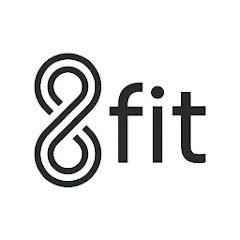What is Home Workout - No Equipment Apps?
Home Workout - No Equipment is a comprehensive fitness application designed to help individuals build strength, increase mobility, and improve cardiovascular health using bodyweight exercises that require no equipment. The program includes structured routines for all major muscle groups, daily training plans, and progressive difficulty levels that adapt as users gain strength. Workouts are typically short, ranging from quick five to ten minute bursts to longer sessions of forty five minutes, making it easier to fit exercise into busy schedules. Instructional content is presented through clear exercise demonstrations, step by step guidance on form, and timed intervals that help maintain pace without external devices. Progress tracking features allow users to monitor completed sessions, record workout streaks, and note improvements in repetitions and duration. Customization options enable activity selection based on goals such as fat loss, muscle toning, or flexibility enhancement, and rest intervals can be adjusted to match individual fitness capacity. The program often bundles focused challenges, such as core strengthening or full body conditioning, to provide goal oriented structures that span several weeks. Warm up and cool down routines are included to reduce injury risk and support recovery, while modifications are suggested for varying ability levels. The app architecture emphasizes simplicity and accessibility, enabling both beginners and experienced exercisers to navigate workouts efficiently. Audio cues, visual timers, and concise coaching tips reinforce correct technique and sustain motivation during sessions. By emphasizing consistent, progressive bodyweight training and evidence informed programming, Home Workout - No Equipment positions itself as a practical solution for individuals seeking effective exercise without the need for a gym environment or specialized gear. It supports short daily commitments that build consistency, offers scalable progressions, encourages balanced movement patterns, and integrates recommendations for rest days to optimize recovery and long-term adherence. The design promotes sustainable habits and measurable results.
The Home Workout No Equipment program focuses on versatile bodyweight training methods that combine strength, mobility, balance, and cardiovascular conditioning into efficient sessions. Exercise categories include core stabilization, upper body pushing and pulling movements, lower body strength, plyometrics, and flexibility work. Typical routines blend compound movements, interval circuits, and unilateral drills to promote muscular symmetry and functional fitness. Progressions are structured so users can advance from basic regressions, such as knee push ups, to full variations, like explosive push ups, as strength improves. Strength days often target specific regions with sets, reps, and tempo guidance, while cardio sessions employ high intensity interval training and metabolic circuits to boost aerobic capacity and calorie expenditure. Mobility and flexibility modules emphasize dynamic warm ups, active stretches, and targeted cool down flows that support joint health and range of motion. Workouts are often presented as progressive programs lasting several weeks, with measurable benchmarks such as increased repetition counts, reduced rest intervals, or longer continuous activity durations. Training frequency recommendations vary by goal, suggesting lighter recovery days between intense sessions and active recovery options like brisk walking or mobility circuits. Nutrition guidance and hydration reminders are often included as complementary supports to help users align caloric intake with training demands while sleep and stress management tips encourage holistic recovery. By offering scalable programming, diverse movement selections, and measurable progression markers, the platform enables efficient skill acquisition and continuous adaptation for long term fitness improvements. A few targeted variations and mobility resets keep training fresh, reducing monotony and preventing overuse injuries while adherence improves.
The user experience of Home Workout No Equipment emphasizes simplicity, clarity, and accessibility to help people begin training with minimal friction. Interfaces typically present daily plans on a clean dashboard, allowing users to pick sessions quickly, view exercise lists, and access short guidance notes. Visual demonstrations often include slow motion and side by side comparisons of correct and incorrect form, which reduces the chance of technique mistakes. Audio cues such as countdowns, encouragement, and transition beeps help keep momentum during circuit sessions without constant screen attention. Accessibility features like adjustable text sizes, high contrast modes, and alternative audio descriptions support users with visual impairments or differing sensory preferences. Customization tools enable the creation of tailored plans by selecting preferred muscle groups, session lengths, and intensity levels, which helps maintain engagement across diverse user populations. Progress feedback appears as simple metrics such as completed workouts, streaks, and incremental performance improvements, providing tangible motivation without overwhelming statistics. Built in timers, rest reminders, and adaptive recommendations guide pacing, while short tips explain breathing patterns, joint alignment, and common compensations to avoid. Social sharing options may allow highlights of achievements to be posted, encouraging accountability and community support. Offline accessibility to saved workouts enables consistency when internet access is limited, and minimal permissions preserve privacy. Regular micro updates to routines and occasional themed challenges add variety, while clear safety cues reassure users about appropriate intensity. Overall, the experience balances guidance with autonomy, helping users develop confidence in bodyweight training and fostering sustainable habits that can integrate into daily life. Short educational blurbs on topics like progressive overload, recovery nutrition, and sleep hygiene contextualize the workouts, reinforcing the why behind each session. Custom reminders and varied motivational prompts help maintain adherence, and simple analytics show long term trends in activity habits, encouraging realistic goal setting.
Regular participation in Home Workout No Equipment routines confers a wide range of health benefits across cardiovascular, musculoskeletal, metabolic, and mental domains. Bodyweight resistance stimulates muscular hypertrophy and neural adaptations through repeated mechanical loading, improving functional strength for daily activities. Short high intensity intervals elevate heart rate and support improvements in VO2max and metabolic conditioning, while steady paced circuits enhance endurance and energy system efficiency. Improved mobility and flexibility reduce injury risk by promoting balanced joint mechanics, and targeted core work enhances spinal support and movement control. For many users, consistent training contributes to healthier body composition through increased lean mass and elevated resting metabolic rate, supporting weight management goals. Beyond physical outcomes, exercise reduces stress hormones, improves mood, and supports cognitive clarity via enhanced circulation and neurotrophic factors. Modifications for varying abilities include range reductions, tempo adjustments, and supported variations that preserve conditioning while accommodating injury or limited mobility. Progress monitoring helps manage load and avoid sudden increases that could provoke setbacks, and integrated recovery strategies like active rest, sleep optimization, and structured deload weeks preserve long term progress. Frequent short sessions improve adherence for many people, making sustained benefit more achievable than sporadic intense training. With thoughtful programming, bodyweight regimens deliver robust improvements in function, health markers, and daily quality of life, while remaining adaptable to individual circumstances and long term goals. Incorporating brief mobility sessions and progressive strength challenges supports bone health and balance, decreasing fall risk in older adults. Improvements in insulin sensitivity, blood pressure, and lipid profiles are commonly associated with regular moderate to vigorous physical activity, and a well designed bodyweight practice can contribute meaningfully to these cardiometabolic benefits. Users who combine consistent movement with adequate nutrition and recovery report sustained energy, improved posture, and greater confidence in physical capabilities, making daily tasks easier.
Practical application of Home Workout No Equipment centers on consistency, progressive challenge, and sensible recovery so gains accumulate without burnout. Start by assessing current fitness levels through simple baseline tests like timed bodyweight circuits, maximum repetition sets, and mobility screens to select appropriate regressions and avoid excessive initial intensity. Build a weekly structure that mixes two to three strength focused sessions, one to two conditioning sessions, and regular mobility or active recovery days, adjusting volume based on individual tolerance. Warm ups and cool downs should be brief but deliberate, priming movement patterns and promoting blood flow to support performance and recovery. Track progress with simple markers such as increased repetitions, reduced perceived exertion, or improved range of motion, and update programs every three to six weeks to maintain stimulus. Nutrition strategies that emphasize adequate protein, balanced macronutrients, and hydration complement training adaptations, while sleep quality and stress management play critical roles in recovery and performance. Set realistic short term goals like completing a program, improving a movement, or increasing consistency, and pair these with process oriented metrics rather than aesthetic endpoints. Variety and social accountability options can boost adherence, and small rituals such as dedicated training times or preparatory checklists reduce activation barriers. Prioritize technique over volume, progress gradually, and listen to signals like persistent joint pain or undue fatigue, which indicate program modification or additional recovery is warranted. Celebrate milestones to reinforce behavior, and recognize that sustainable improvements arise from cumulative effort over months and years, not overnight transformations. By adopting clear structure, measurable progress markers, and mindful recovery practices, individuals can integrate effective bodyweight training into busy lives, boost general fitness, and maintain long term health improvements. Small consistent steps compound into meaningful change, making the approach realistic and widely accessible. Start conservatively, progress intentionally, and prioritize longevity




